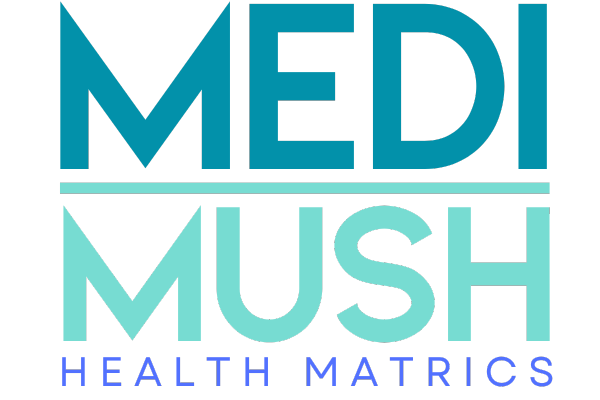
Fit Over Forty: The Ultimate Guide to Staying Strong, Healthy, and Vibrant
Turning 40 can feel like a milestone—and for good reason. It’s often a time of reflection, reinvention, and renewed commitment to health and well-being. But let’s be honest: Staying fit over forty comes with its challenges. The metabolism slows down, recovery takes longer, and those aches and pains that used to vanish overnight now linger a little longer. But here’s the good news: It’s absolutely possible to stay fit, strong, and vibrant well into your forties and beyond.
In this guide, we’ll explore practical tips, expert-backed advice, and actionable steps to help you not only maintain your health but thrive in this exciting phase of life. Ready to rediscover your best self? Let’s get started.
Why Fitness Over 40 Matters More Than Ever
By the time we hit our forties, the natural aging process begins to show its hand. Muscle mass declines (at a rate of about 3-8% per decade after 30), bone density starts to decrease, and hormone levels fluctuate. While these changes are natural, they’re not inevitable. With the right approach to fitness, you can:
-
Maintain a healthy weight with Smart Scales that measure 20 body changes, including visceral fat, an indicator of longevity and heart health.
-
Boost energy levels
-
Improve mental clarity and mood
-
Prevent chronic diseases by measuring blood sugar and prevent diabetes.
-
Stay active and independent for decades to come
Common Challenges (And How to Overcome Them)
1. Slower Metabolism
You’ve likely noticed it: the same foods you’ve always eaten now seem to “stick” a little more. This is due to a decline in metabolic rate.
Solution:
-
Incorporate strength training to build lean muscle, which boosts metabolism.
-
Focus on nutrient-dense foods over empty calories. Think lean proteins, healthy fats, and fiber-rich veggies.
-
Stay hydrated—even mild dehydration can slow your metabolism.
2. Time Constraints
Between career demands, family responsibilities, and social commitments, finding time for fitness can feel impossible.
Solution:
-
Prioritize shorter, more efficient workouts like HIIT (High-Intensity Interval Training) or bodyweight circuits.
-
Schedule fitness into your calendar like any other non-negotiable appointment.
-
Involve your family! A weekend hike or bike ride is a great way to stay active together.
3. Injuries and Recovery
Our bodies don’t bounce back quite like they used to. Overtraining or improper technique can lead to lingering injuries.
Solution:
-
Emphasize warm-ups and cool-downs.
-
Listen to your body and allow adequate recovery time.
-
Incorporate low-impact activities like swimming or yoga to reduce joint strain.
The Pillars of Fitness Over Forty
1. Strength Training
Building and maintaining muscle is crucial after 40. Strength training not only combats muscle loss but also improves bone density and supports joint health.
-
Aim for 2-3 strength sessions per week.
-
Focus on compound movements like squats, deadlifts, and push-ups that engage multiple muscle groups.
-
Use proper form to avoid injuries—consider working with a trainer if you’re new to weightlifting.
2. Cardiovascular Fitness
Heart health is non-negotiable. Cardiovascular exercise keeps your ticker strong, boosts endurance, and burns calories.
-
Aim for at least 150 minutes of moderate-intensity cardio per week.
-
Mix it up! Try jogging, cycling, dancing, or brisk walking.
-
Incorporate intervals to maximize calorie burn and improve heart health.
3. Flexibility and Mobility
A supple, flexible body is more resistant to injuries and everyday aches.
-
Include stretching or yoga 2-3 times a week.
-
Focus on dynamic stretches before workouts and static stretches afterward.
-
Don’t overlook mobility exercises like foam rolling to release tight muscles.
4. Nutrition
Abs aren’t just made in the gym; they’re revealed in the kitchen. What you eat plays a pivotal role in fitness.
-
Prioritize protein to support muscle repair and growth.
-
Eat a rainbow of fruits and vegetables for essential vitamins and antioxidants.
-
Limit processed foods, sugar, and alcohol.
-
Consider supplements like omega-3s, vitamin D, and magnesium to fill nutritional gaps.
5. Mental Fitness
Your mindset is just as important as your workout routine. Stress and mental fatigue can derail even the best fitness plans.
-
Practice mindfulness techniques like meditation or deep breathing.
-
Set realistic goals and celebrate small wins.
-
Surround yourself with a supportive community, whether that’s a workout buddy, a fitness class, or an online group.
Envisioning Your Fittest Self at 40 and Beyond
Imagine waking up every morning full of energy, free from chronic aches, and ready to tackle the day. Picture yourself running around with your kids or grandkids, traveling the world, or simply feeling confident in your own skin. That vision isn’t just a pipe dream—it’s a realistic outcome with consistent effort and the right strategies.
Fit over forty FAQs: Addressing Your Concerns
Q: Is it too late to start? A: Absolutely not! Studies show that people who begin strength training in their 40s, 50s, or even 60s can still build significant muscle and improve their overall health.
Q: How often should I work out? A: Aim for 3-5 days a week, incorporating a mix of strength, cardio, and flexibility training.
Q: What if I have a chronic condition? A: Always consult your doctor before starting a new fitness routine. Many conditions, like arthritis or diabetes, can improve with tailored exercise programs.
Q: How do I stay motivated? A: Set clear, achievable goals, track your progress, and find activities you genuinely enjoy. Remember, consistency beats perfection every time.
Final Thoughts: Start Today, Stay Tomorrow
Getting fit over forty isn’t about turning back the clock—it’s about embracing this stage of life with vitality and resilience. By focusing on strength, cardio, flexibility, nutrition, and mental health, you can create a lifestyle that supports your goals and sets you up for decades of wellness.
So, what are you waiting for? Lace up your sneakers, grab a dumbbell, or simply take a brisk walk around the block. The best time to start was yesterday. The next best time? Today.




